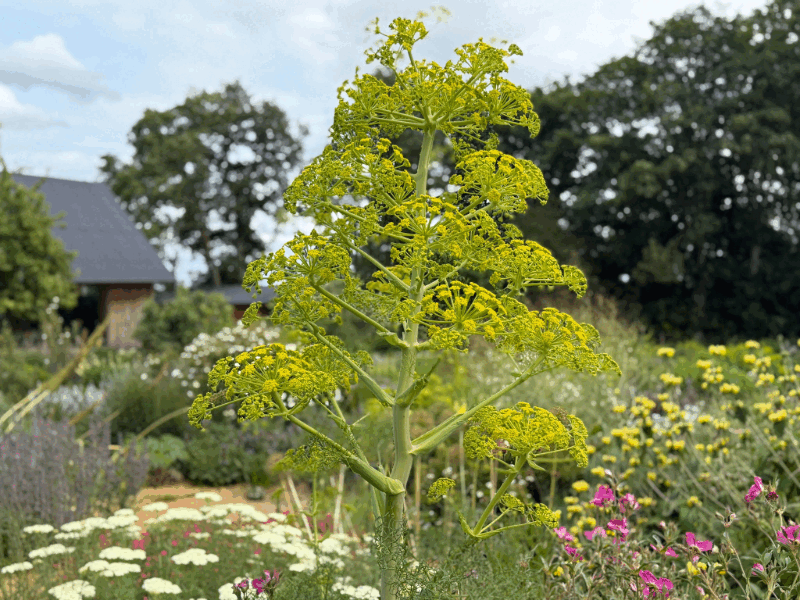
We are thrilled that through the heredity of Kate, Tom’s sister, we have been able to extend the plant library by about 25%. As part of this we’ve now planted up to 80% of the new sand beds, planting woody shrubs like Santolina and Cistus on the more raised areas of sand. The sand is deeper here at approx 200 mm with 50 mm grit added.
Some new exciting additions to the extension include Laserpitium latifolium subsp. latifolium a European native umbel (bar the UK) commonly found in mountain dry forests, grassy slopes, and meadows. It prefers calcareous soils and can be found at altitudes between 400 meters to 2,100 meters above sea level, now in flower in the Plant Library.
We are hoping to establish our two tiny plants of Bigelowia nuttallii from Derry at Special Plants. Seemingly looks like an umbel but is actually from the Asteraceae family. Native to the south eastern corner of America this plant is very rare in cultivation. It can be found in sandstone outcrops in mesic longleaf pinelands or in sand pine scrub. It would be great to get this going.
Sideritis scardica is an addition to our established group of Sideritis syraica, the Greek mountain tea, yet to try it! Charlie had some growing happily at Knepp and fortuitously a visitor kindly donated two to the PL The week prior!
We have planted Eragrostis curvula, a smart looking grass originally native to South Africa but has been introduced all over the world and has many cultural uses including basket making in Lesotho and is a valuable source of food for grazing livestock through Africa. Its strong establishing root network has been used to for erosion control. This will have to be kept in check as it can be invasive!
In the existing Plant Library the dry spring has been the perfect condition for the Iris germanica this year. The Benton irises have all been outstanding. And the more modest Iris pallida subsp. illyrica from the north Dalmatian coast looked ever graceful.
First year of the Sardinian fennel Ferula arrigonii Bocchieri to flower.
It has been a real coup to have Emma Youngman our new Serge Hill Project Rockcliffe Gardening Scholar starting work this month in the garden with me.
She has made some great progress with the cutting garden planting and layout. And we are getting together some lovely plants for the Serge Hill Plant Fair on the 27th July.
Emma has spent some time at Dixter and is already proving a great addition to the team!
More from Emma next month.